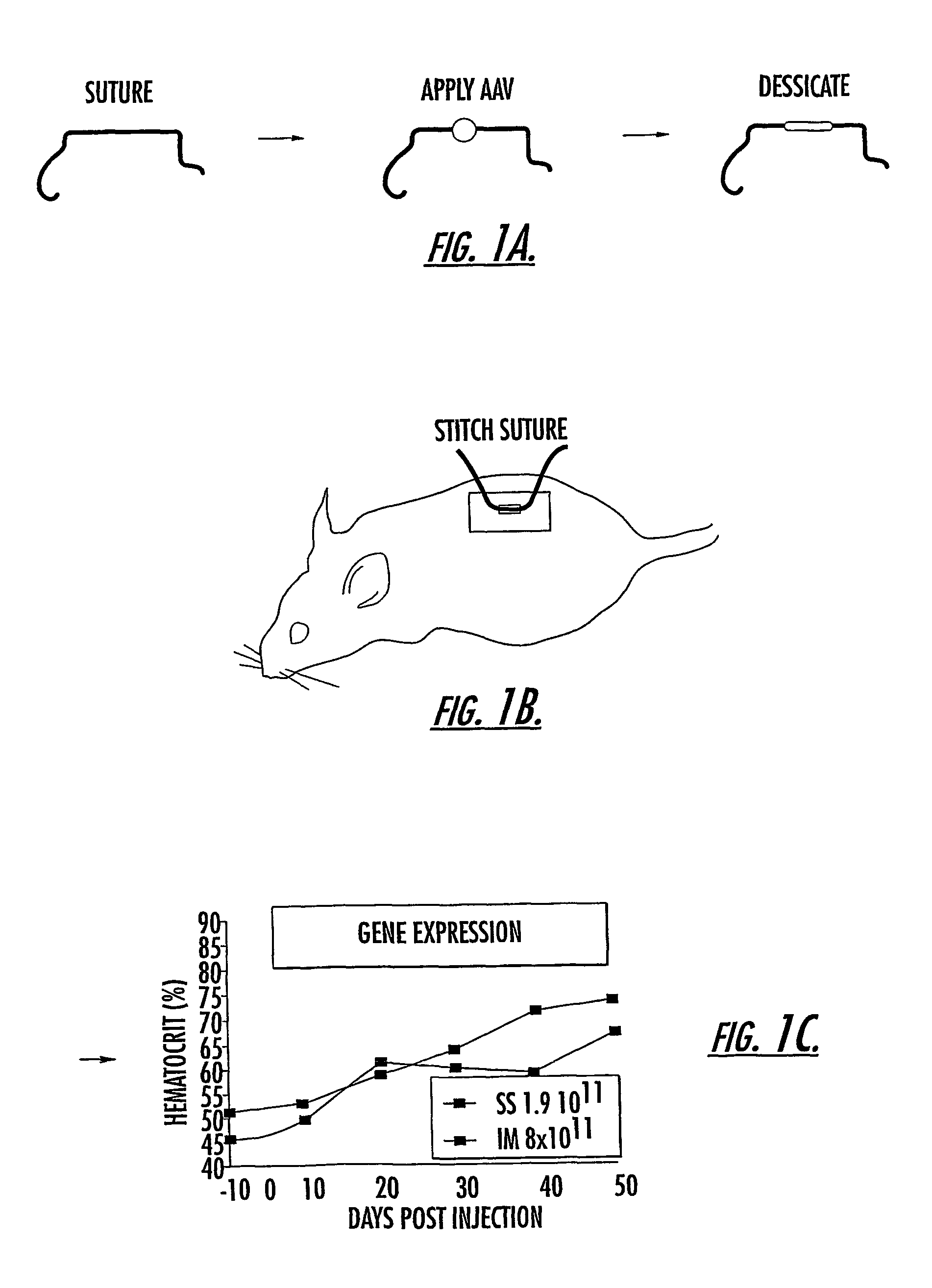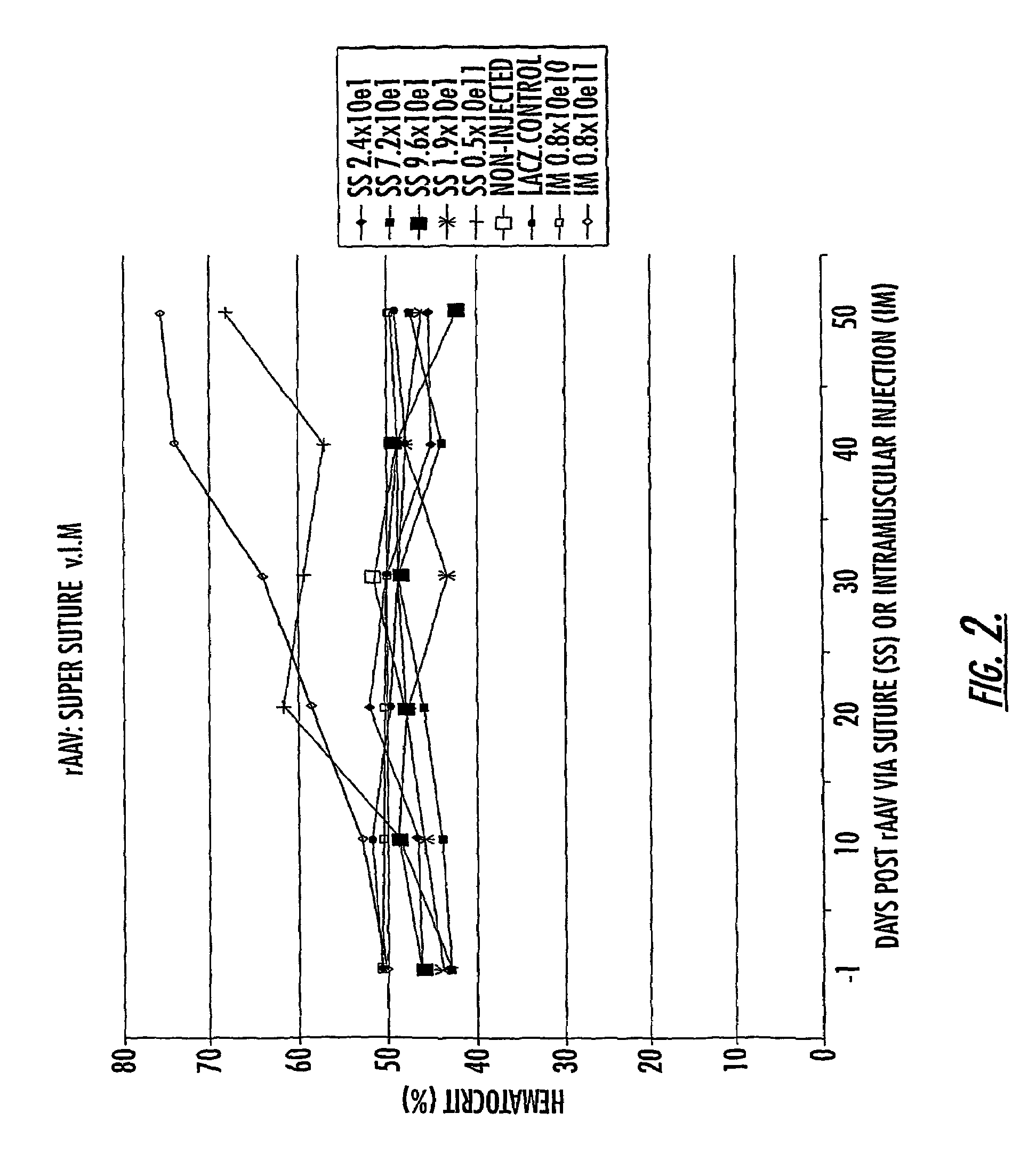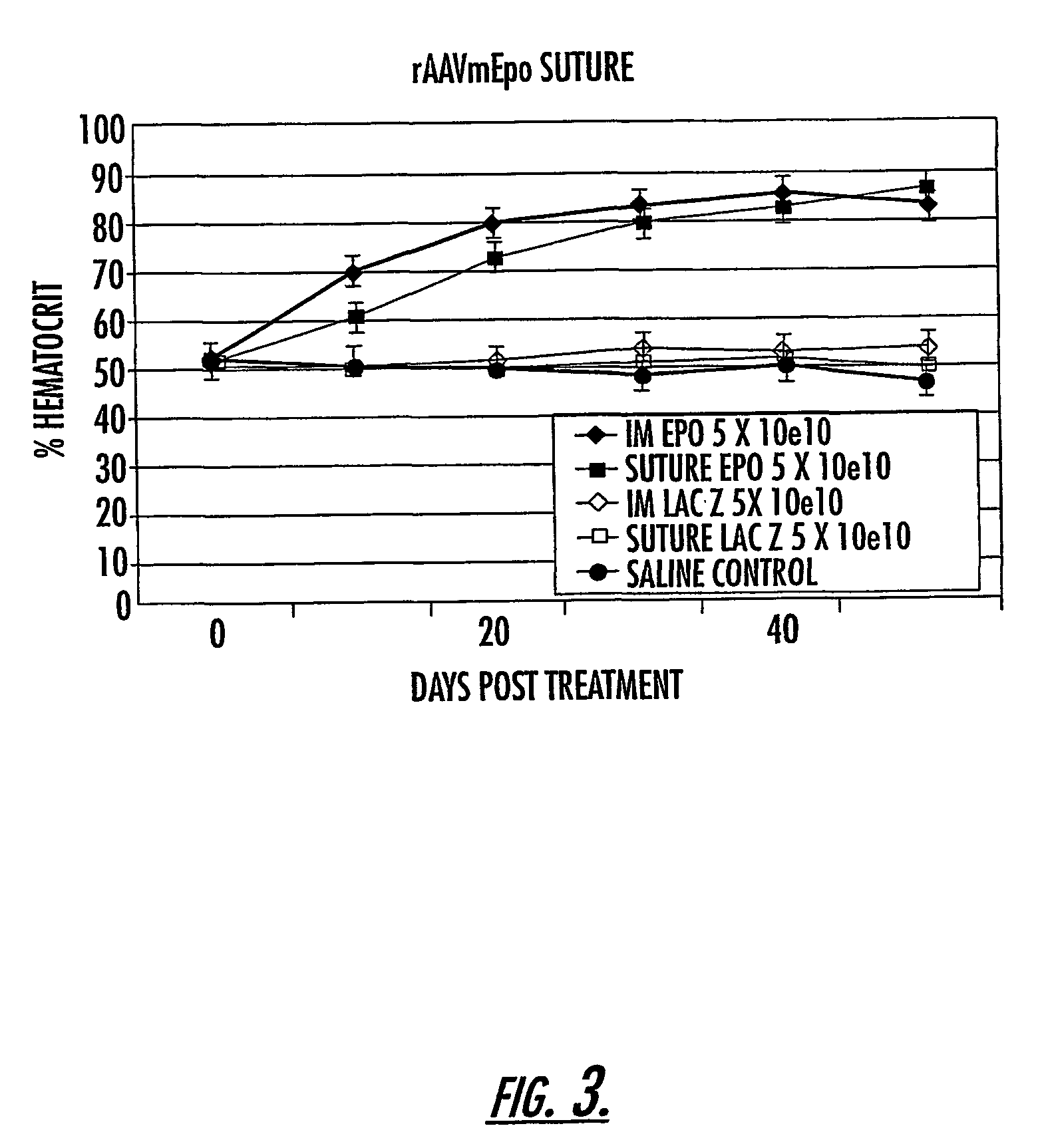Methods and compounds for controlled release of recombinant parvovirus vectors
a technology of parvovirus and in vivo release, which is applied in the direction of viruses, granular delivery, non-active genetic ingredients, etc., can solve the problems of inability to achieve the goal of delivering dna, affecting the stability of therapy vectors or formulations, and hampered approaches
- Summary
- Abstract
- Description
- Claims
- Application Information
AI Technical Summary
Benefits of technology
Problems solved by technology
Method used
Image
Examples
example 1
[0091]Recombinant AAV2 produced using a triple transfection protocol, and expressing the gene for the green fluorescent protein (GFP), was applied to 3.0 vicryl suture material (Ethicon, Somerville, N.J.) or to a circle of positively charged nylon membrane (GeneScreen Plus, NEN Life Science, Boston,Mass.) and allowed to air dry in a room temperature vacuum. HeLa cells were grown to approximately 80–90% confluence in monolayer tissue culture were overlain with either the AAV / GFP / suture or the AAV / GFP / Nytran™ and allowed to infect for periods of time up to 30 minutes, prior to removal of the virus-impregnated material. Following overnight incubation, cells were examined for transduction with GFP by direct visualization of fluorescing cells using a Leitz DM IRB fluorescence microscopic (Leica, Heerbrugg, Switzerland).
[0092]Subsequently, rAAV / suture (coated 3-0 or 4-0 coated, braided polyglactin suture or 4-0 chromic gut suture) was prepared under sterile conditions in a negative pressu...
example 2
[0093]In parallel to the experiments outlined in Example 1, Nytran® (positively charged nitrocellulose membrane) was investigated as a platform for virus. Uniform-sized circles of Nytran® were prepared and sterilized by autoclaving. Various doses of virus (106, 5×105, 105, 5×104, 104 and 5×103 transducing units) in a total volume of 10 ml were added to the membrane and dessicated in place under vacuum without heat. The underlining paper of the Nytran® disk was visibly wet by the virus in ten micro-liters. The Nytran® disks and the underlining paper were placed inverted on nearly confluent 293 cells, which were previously infected with Ad (4 hrs prior to the matrix / rAAV). The position of the disc on the plate was marked on the underside of the plate, and the disk removed after one hour infection. The next day, the plates of cells were stained for lacZ and the blue staining observed to occur primarily in the cells directly underlying the matrix / rAAV placement.
example 3
[0094]Each of the above experiments was repeated using rAAV / suture or rAAV / matrix carrying the gene for the marker green fluorescent protein (GFP) and performed on HeLa cells. Comparable results were obtained, with marker green fluorescence seen in cells that had been overlain with the virus-impregnated materials.
PUM
| Property | Measurement | Unit |
|---|---|---|
| total volume | aaaaa | aaaaa |
| surface area | aaaaa | aaaaa |
| surface area | aaaaa | aaaaa |
Abstract
Description
Claims
Application Information
 Login to View More
Login to View More - R&D
- Intellectual Property
- Life Sciences
- Materials
- Tech Scout
- Unparalleled Data Quality
- Higher Quality Content
- 60% Fewer Hallucinations
Browse by: Latest US Patents, China's latest patents, Technical Efficacy Thesaurus, Application Domain, Technology Topic, Popular Technical Reports.
© 2025 PatSnap. All rights reserved.Legal|Privacy policy|Modern Slavery Act Transparency Statement|Sitemap|About US| Contact US: help@patsnap.com



